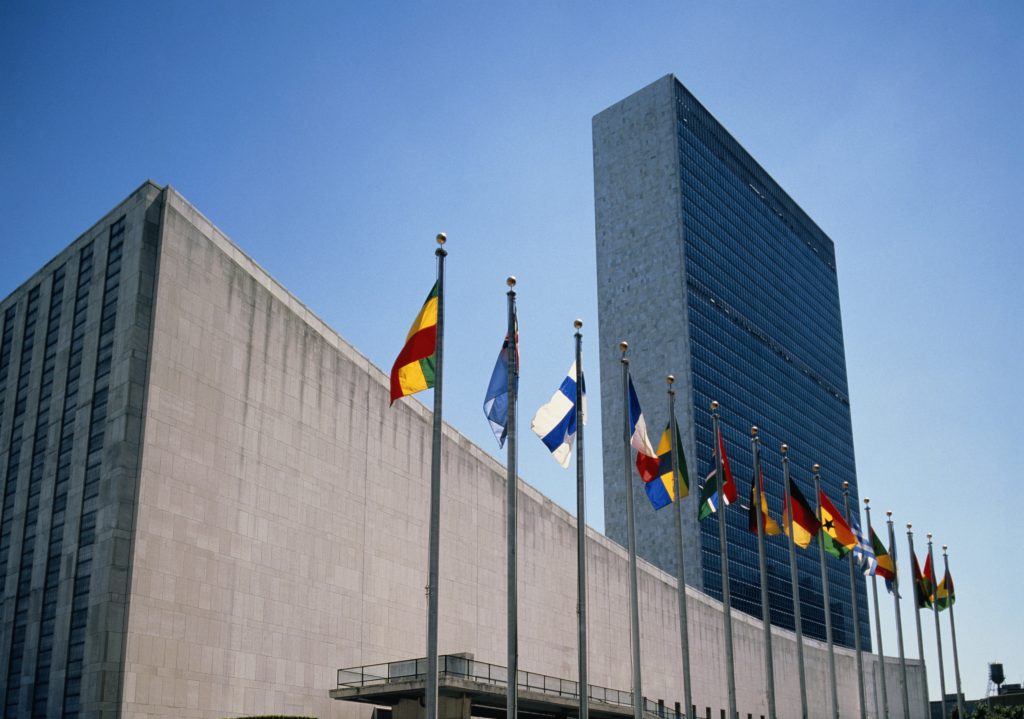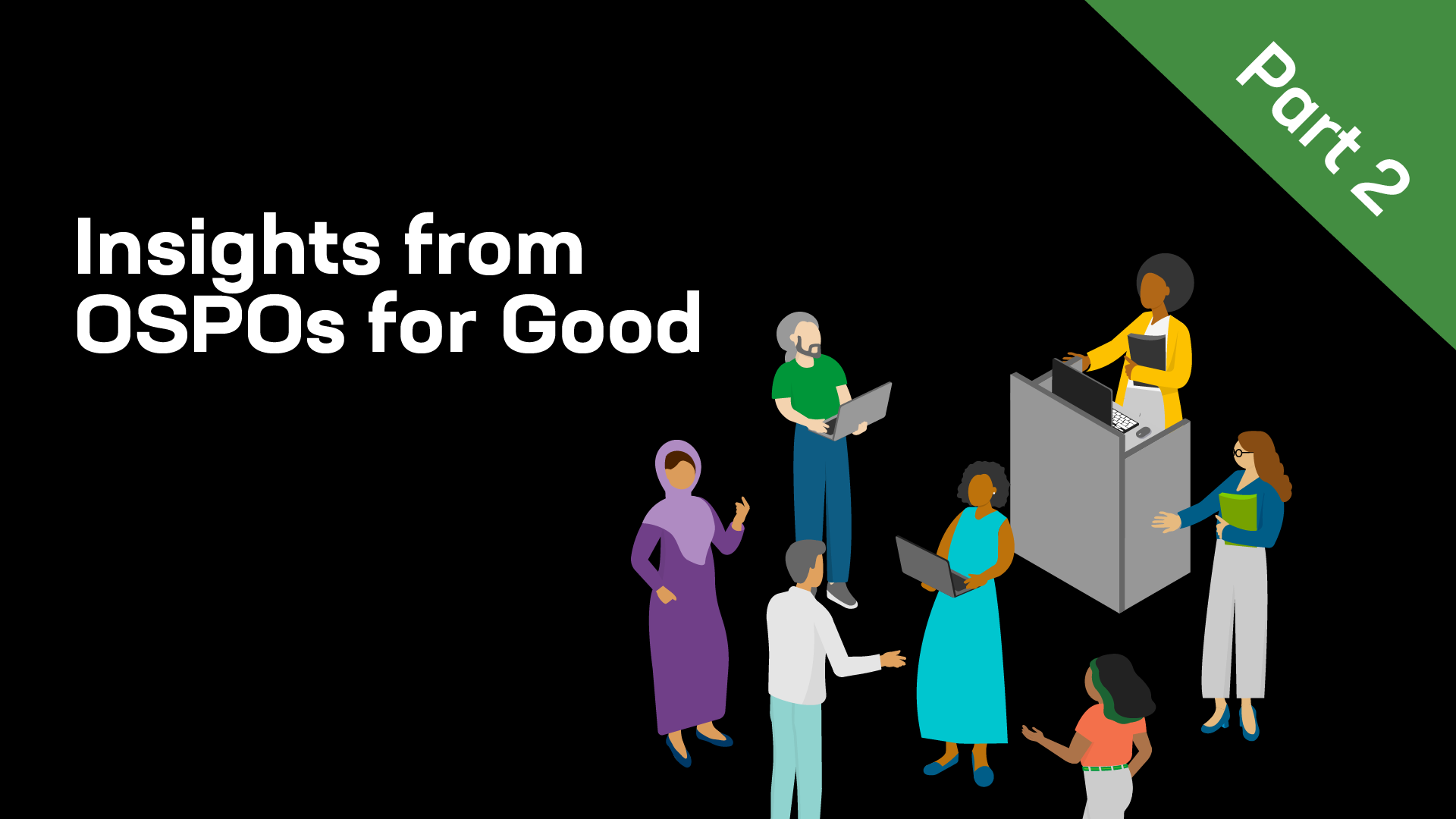The first post of this series provided a brief overview of the OSPOs for Good 2024 conference, its significance, and introduced leveraging open source for the United Nations Sustainable Development Goals (SDGs).
Reflecting on the conference, it’s clear that open source initiatives play a crucial role in advancing the SDGs. This post focuses on actionable steps that organizations can take to support these goals through open source practices.
Open Source, Enterprises, and the SDGs
As an open source practitioner, I’m currently on the steering committee for the TODO Group, a Linux Foundation community of professionals involved in OSPOs or similar roles. In the TODO Group, business value conversations come up often, as most of the group are individuals affiliated with enterprises. As such, these conversations require a balance between business objectives and human sentiments. By integrating business goals with human well-being, we can create strategies that not only drive economic success but also contribute positively to society and the environment.
The SDGs are human-centric – they are about making the world a better, safer, more equitable place for everyone. At the conference, Kenya’s Special Envoy on Technology Philip Thigo stated, “Open source almost becomes intrinsic or integral to everything that we do.” Open source gives agency to those who would not otherwise have had access to resources, research, education, infrastructure, or opportunity. It allows for entire communities to be connected and benefit from innovations and technological advancements, solving local challenges more efficiently.
Hans Vestberg, CEO of Verizon Communications, spoke about the need for “digital inclusion,” which led to the creation of the EDISON Alliance. This philanthropic initiative has a 5-year goal to connect 1 billion people to digital education, digital healthcare, and financial services. Key challenges to achieving this goal include access to technology, affordable devices and services, and the availability of applications. While digital inclusion is not directly an SDG, it can be seen as a precondition or a necessity that intersects with several goals.

But how do the SDGs translate to business value? In addition to the EDISON Alliance and his passion for digital inclusion, Vestberg also shared some insight from an enterprise perspective on how the SDGs relate to business. At Verizon, they’re committed to connecting 10 million students in the U.S. to digital education through STEM programs, school partnerships, as well as donation and maintenance of devices. Through this effort, they’re building broadband, encouraging and supporting students with STEM and, in turn, building up the future workforce.
Leveraging Tech for Social Impact at F5 and NGINX
Similar to Verizon, F5 is committed to leveraging technology for positive social impact through its Global Good initiative, which includes the Tech for Good program providing grants in support of SDG Goal 9: Industry, Innovation, and Infrastructure. This initiative aligns closely with the UN’s SDGs by focusing on digital inclusion, education, and environmental sustainability. Through partnerships with nonprofit organizations and community-focused projects, F5 aims to bridge the digital divide, enhance cybersecurity, and support educational opportunities for underserved communities, demonstrating how technology can drive global good. Additionally, as part of our Environmental, Social, and Governance (ESG) strategy, F5 has set a science-based target to reduce our environmental impact by 2030. This directly addresses SDG Goal 13: Climate Action and involves cutting greenhouse gas emissions to contribute to a sustainable future.
At NGINX, a part of F5, our production-grade open source projects also directly align with SDG Goal 9. Our open source projects provide a reliable and high-performance platform that powers many of the world’s busiest websites and applications, ensuring that digital infrastructure can scale to meet rising demands. This is crucial for developing resilient and scalable digital systems in regions with varying levels of resources. And just like security, I believe digital infrastructure enables multiple SDGs.
How Organizations Can Start Integrating the SDGs
At the conference, Hilary Carter, SVP of Research and Communications at the Linux Foundation, recommended that all organizations conduct a “state of the union” assessment to understand their current alignment with the UN’s SDGs. Carter suggests identifying which goals are most relevant and exploring additional ways that you or your organization can better support the SDGs.
Actionable Steps for Open Source Practitioners
Here are my takeaways on what we can all do as open source practitioners:
- Promote a Culture of Kindness and Inclusion – Foster an environment where everyone feels valued and respected.
- Improve and Increase Documentation – Ensure that resources are accessible and comprehensive to aid understanding and participation.
- Be Open to Mentorship – Share knowledge and guide others in the community.
- Lower Barriers to Entry – Make it easier for people from various backgrounds and experiences to get involved in projects.
- Leverage Open Source for Education – Understand that open source is also a path to education and new skills, potentially leading to employment opportunities.
- Enhance Digital Security – Make the digital ecosystem safer and more secure, as security is essential for achieving many of the SDGs.
- Contribute to Open Source Sustainability – Ensure that critical open source projects are maintained and sustainable for the long term.
Open Source, AI, and the Digital Divide
Another conference topic with a dedicated panel was about the role artificial intelligence (AI) plays in open source. Not only does AI require newfound considerations for intellectual property and data usage, but it also emphasizes the digital divide and pushes us to reevaluate the way we collaborate.
The “digital divide” refers to an apparent resource gap across many nations. For any organization, entity, or individual to actively participate in open source AI, access to data, talent or education for skill development, and reliable computing resources – whether infrastructure or devices – is essential. In the academic sector, Craig Ramlal, Head of the Control Systems Group at UWI St. Augustine, pointed out how difficult it can be to keep curricula updated to match rapid technological advancements.
AI is inherently cross-domain, and there is a growing need for collaborative efforts between technologists and experts from other fields. This means that enterprises will need to support cross-disciplinary communities and empower subject matter experts to create their own systems.
To address the digital divide, some proposals at the conference included cross-disciplinary hackathons and low-code or no-code solutions. As technology progresses, I believe we will be continuously tasked to think about open source principles in new ways.
Moving Forward
Reflecting on the discussions from the conference, it’s clear that the path forward involves a combination of introspection and action. Organizations must assess their strengths and areas for improvement to accelerate progress with the United Nations SDGs.
OSPOs for Good 2024 acknowledged open source as a core component of digital transformation as well as the potential impact of open source in tackling global challenges. While progress has been made, there is still so much work to be done, and it will require the collective efforts of us all to fully harness the power of open source in achieving the SDGs for the greater good.

Doug Armand / Stone via Getty Images
By implementing these actionable steps, organizations can contribute to the Sustainable Development Goals through open source. The insights from the OSPOs for Good 2024 conference highlight the transformative potential of open source in driving global collaboration and innovation. Let’s work together to leverage open source for a more sustainable and equitable future.

